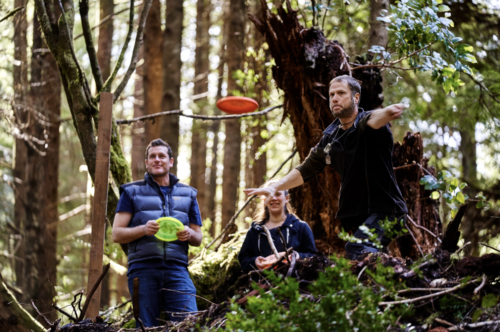EXHIBIT TELLS THE STORY OF OREGON’S DEPRESSION
The Great Depression hit Oregon’s coast like a giant sneaker wave. Businesses shut down, families moved across country to find work and displaced workers were offered relief through government programs.
Cannon Beach and the North Coast experienced a revitalization during the years following the Depression through President Franklin Roosevelt’s New Deal. The New Deal offered jobs building bridges, creating state parks and even documenting the success of relief programs through photography, art and writing.
Known as the “alphabet administration,” Roosevelt’s team created programs like the Farm Securities Administration (FSA), where photographers like Dorothea Lange gained notoriety for photos of migrant workers in farming camps across the country.
“She made over 550 photos in Oregon alone,” said Linda Gordon in an Oregon Historical Quarterly article. “In the summer and fall of 1939. . .she made two trips into the Northwest. She traveled up and down US 99. . .following the routes of the migrant farm workers she photographed.”
Lange’s photography has become almost synonymous with the Great Depression, and features striking images of down-trodden families across the West.
The New Deal also created the Civilian Conservation Corps (CCC), which built Ecola State Park and hundreds of other campgrounds, roads and recreation areas throughout Oregon.
The New Deal’s Federal Writers Project, a division of the Works Progress Administration (WPA), wrote guidebooks for each state in the union, and Oregon: End of the Trail was created for tourists and Oregonians alike, to promote the natural splendor of our beaches, mountains and rivers.
The Cannon Beach History Center and Museum’s new exhibit will showcase these federal work programs in a six-month display of Depression Era photography and artifacts from August through February. The exhibit will feature photos by Dorothea Lange, Russell Lee and Arthur Rothstein, along with vintage camera equipment and historical documents. The exhibit will also showcase CCC tools and memorabilia, as well as photos from the 1940 Oregon Coast Tour of the WPA.
“The Depression is an era not so unlike our own,” History Center Program Director Grace Saad said. “This exhibit will remind people that there is always hope, even in the darkest of economic times.”
A dedication will ceremony, as well as a lecture on the Great Depression will also take place soon after the exhibit opens, Saad said.
For more information, please contact the History Center at 503-436-9301, cbhs@seasurf.net, or visit www.cbhistory.org or stop by the Center Wednesday through Monday from 1 p.m. to 5 p.m. Admission is free, but donations are accepted.



